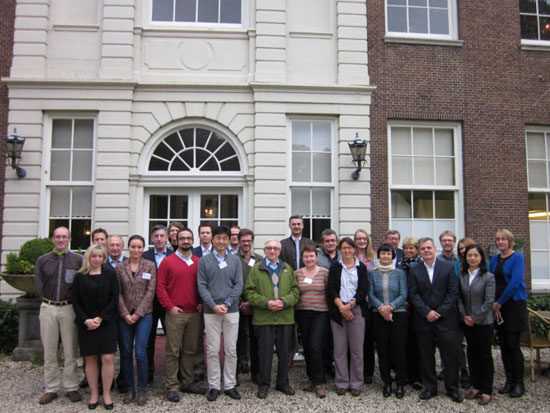This article first appeared in The Information Point newsletter Our World in 2012 when Sarah Foye with contributions by Dr. Alan Beggs and Lindsay Swanson, MS, CGC told us about the importance of genetic testing.
The centronuclear myopathies (CNMs) are a group of rare inherited muscle disorders that are caused by genetic changes in any one of several different genes. CNMs are considered to be an inherited group of disorders, meaning that the genetic change can be passed from parent to child. However, there are rare cases where neither parent is found to share the genetic change, meaning that the child has a new or ‘sporadic’ mutation.
In any case of muscle disorder, families are often left wondering, where did this come from, what caused this problem, what are the risks for other family members? For many families the answers to these questions can be found by testing the affected individual for the genetic mutations known to cause CNM.
Diagnosing a muscle disorder like CNM is usually made by reviewing a person’s symptoms and their family medical history and by having a physical examination by a doctor who is often a specialist. Once a doctor suspects a muscle disorder, they will often do further testing like a blood test, a nerve test, or a muscle biopsy.
During a muscle biopsy, a small portion of muscle is removed and examined closely. Different muscle disorders often have a unique appearance under a microscope. Examining the features of the muscle helps doctors to diagnose a specific muscle disorder. The muscle biopsy is considered the gold standard method of diagnosing CNM today. However, there are limitations to this method. Unfortunately, there are many problems with diagnosing CNM by muscle biopsy. Certain features of a muscle biopsy may be ambiguous or misleading because these findings may be present in many different forms of muscle disease. For example, centrally located nuclei can be present in myotubular myopathy but also with muscular dystrophy, myotonic dystrophy and many other muscle disorders.
Although there are difficulties with muscle biopsies, the discovery of new genes and the invention of new gene-testing technologies have opened new doors for diagnosing CNM and other related muscle disorders. Testing for genetic mutations known to cause CNM is one way of answering families’ questions as well as confirming a diagnosis. The genes known to be associated with CNM include the following: MTM1, DNM2, BIN1 and RYR1. Once a doctor suspects that a person has CNM, they can send a sample of DNA to test for one of these known genes.
Genetic testing can be arranged by a pediatrician, primary doctor, or a doctor specializing in genetics (geneticist). Because genetic testing for CNM can be complex, families with CNM may want to consider seeing a geneticist along with a genetic counselor when pursing a genetic diagnosis. Further information on how to arrange genetic testing can be found on the genetic testing pages of the Information Point website.
Why bother with genetic testing?
There are many benefits to pursing a genetic diagnosis. We already touched on how genetic testing can confirm a specific diagnosis. Some other benefits include:
Family planning
Knowing the genetic diagnosis can help people to understand how the disorder is passed within a family. It can also inform people about the risks of having an affected child. This information can help people make decisions about having children and can provide health risks for family members.
Medical problems
Identifying the specific gene can help to predict medical problems that may be associated with the gene. For example, liver problems can be associated with mutations in the MTM1 gene and malignant hypothermia can be associated with RYR1 mutations. By knowing that there are risks for certain medical problems, patients and their doctors can decide together what type of monitoring, treatments, or preventative actions they may need.
Research
As clinical trials get underway for CNM, researchers will want to enroll people in research based on their genetic diagnosis. Thus, genetic confirmation may be a condition to participate in future research.
Treatment
Knowing the specific gene mutation can help doctors and scientists to understand the specific cause of the disorder in the body. By identifying the specific mechanism which is causing the deficit, it can help to target potential treatments.
Please keep in mind that genetic test results can sometimes be surprising, upsetting, and lead to more questions. Please work with your healthcare professionals and genetic counselors to guide you through this process. If you might be interested in learning more about whole exome sequencing for your rare or unknown condition, please contact the Manton Center for Orphan Disease Research at Boston Children’s Hospital or contact Meghan Connolly by email or by telephone one 617-919-4287.



































